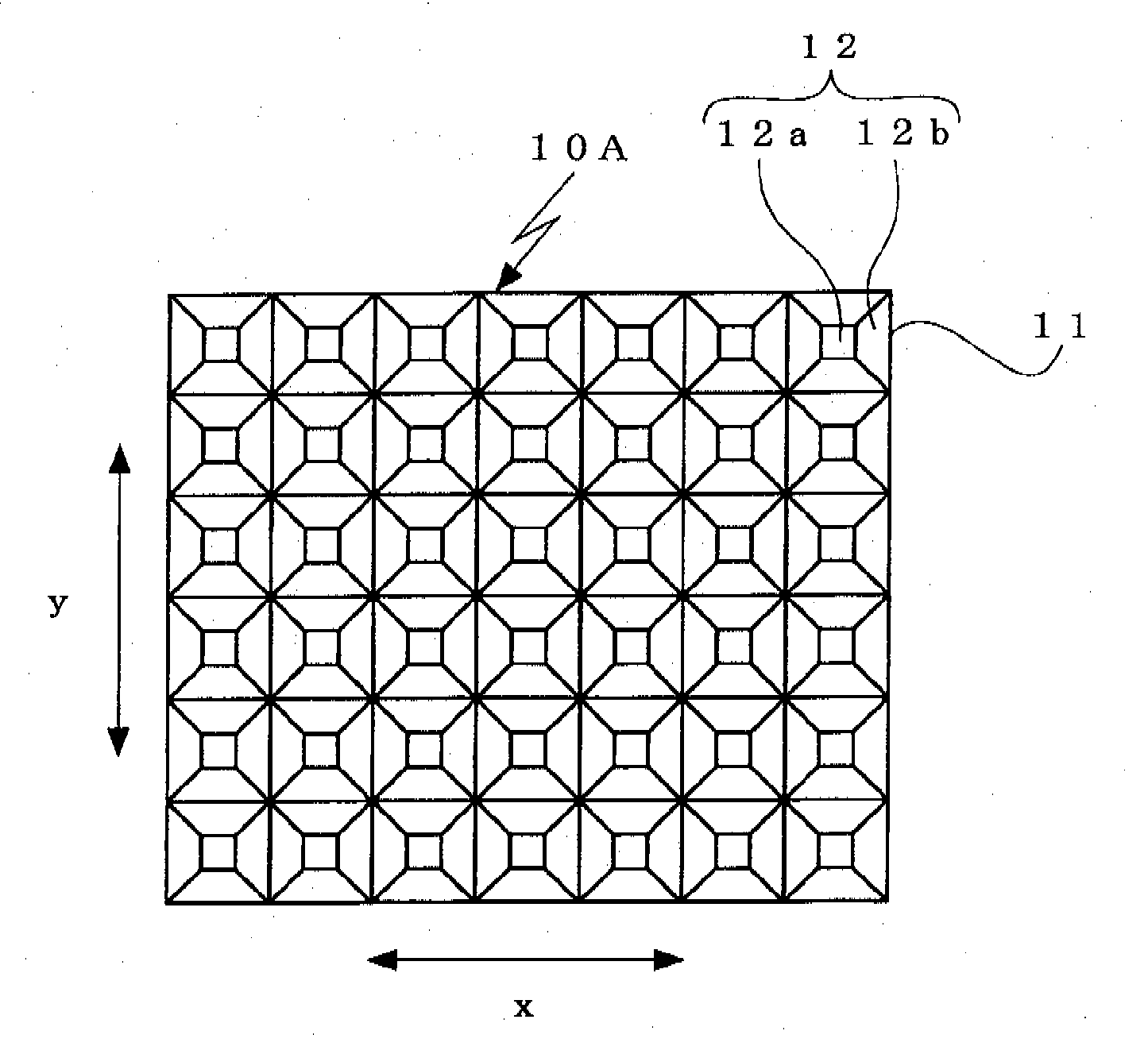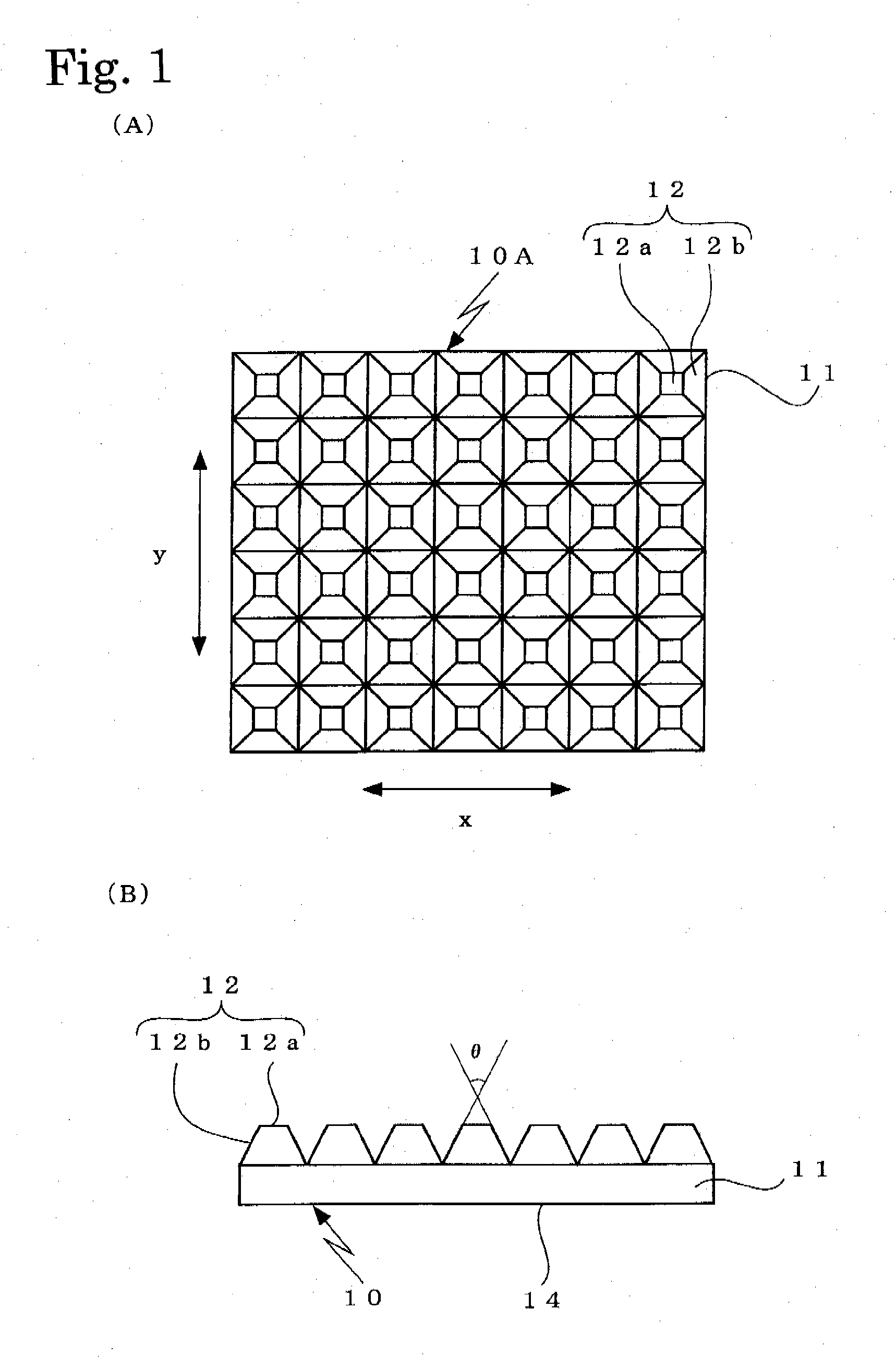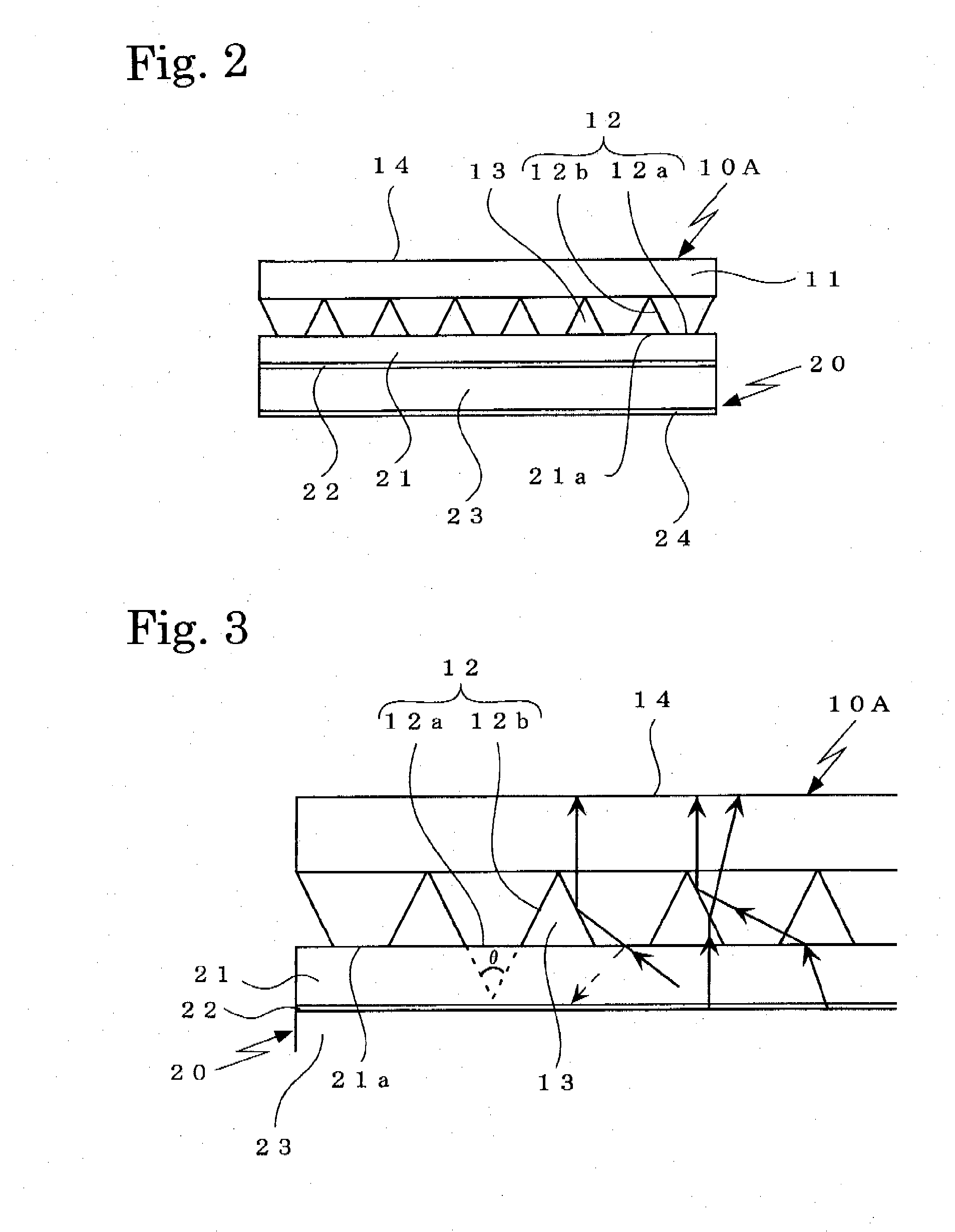Surface light emitter
a technology of surface light and light source, which is applied in the direction of lighting device details, lighting and heating apparatus, instruments, etc., can solve the problems of device can only provide brightness, and inability to achieve sufficient front brightness, so as to achieve increased front brightness, increased front brightness, and increased front brightness
- Summary
- Abstract
- Description
- Claims
- Application Information
AI Technical Summary
Benefits of technology
Problems solved by technology
Method used
Image
Examples
embodiment 1
[0029]In a surface light emitter of an embodiment 1, a light control sheet 10A is used as a light control sheet 10. As shown in FIG. 1A and FIG. 1B, the light control sheet 10A has a configuration wherein projections 12 shaped like a truncated square pyramid and having square planar portions 12a at distal ends thereof are consecutively formed on one side of a transparent substrate 11 as arranged in x-direction and y-direction of the substrate 11. The projection 12 is configured such that the cross-sectional profiles thereof in the x-direction and in the y-direction of the transparent substrate 11 are the same isosceles trapezoid.
[0030]As shown in FIG. 2, the surface light emitter of the embodiment 1 employs a surface-emitting device 20 comprising an organic EL device wherein an organic EL layer 23 and a counter electrode 24 are overlaid on a surface of a transparent substrate 21, on which surface a transparent electrode 22 is overlaid. The planar portions 12a at the distal ends of t...
embodiment 2
[0041]In a surface light emitter of an embodiment 2, a light control sheet 10B is used as the light control sheet 10. As shown in FIG. 6A to FIG. 6C, the light control sheet has a configuration wherein the projections 12 shaped like a truncated rectangular pyramid and formed with rectangular planar portions 12a at the distal ends thereof are consecutively formed on the one side of the transparent substrate 11 as arranged in the x-direction and the y-direction thereof. The above projection 12 is configured such that the cross-sectional profiles thereof in the x-direction and in the y-direction of the transparent substrate 11 are isosceles trapezoids which have the same height but different shapes.
[0042]Similarly to the surface light emitter of the embodiment 1, the surface light emitter of the embodiment 2 is also assembled such that the planar portions 12a at the distal ends of the truncated-pyramid shaped projections 12 of the above light control sheet 10B are optically bonded to t...
embodiment 3
[0049]In a surface light emitter of an embodiment 3, a light control sheet 10C is used as the light control sheet. As shown in FIG. 8A to FIG. 8C, the light control sheet has a configuration wherein the projections 12 shaped like a truncated rectangular pyramid and formed with rectangular planar portions 12a at the distal ends thereof are consecutively formed on the one side of the transparent substrate 11 as arranged in the x-direction and the y-direction thereof. The above projection 12 is configured such that the cross-sectional profiles thereof in the x-direction and in the y-direction of the transparent substrate 11 are isosceles trapezoids which have different heights and shapes.
[0050]Similarly to the surface light emitter of the embodiment 1, the surface light emitter of the embodiment 3 is also assembled such that the planar portions 12a at the distal ends of the truncated-pyramid shaped projections 12 of the above light control sheet 10C are optically bonded to the output s...
PUM
 Login to view more
Login to view more Abstract
Description
Claims
Application Information
 Login to view more
Login to view more - R&D Engineer
- R&D Manager
- IP Professional
- Industry Leading Data Capabilities
- Powerful AI technology
- Patent DNA Extraction
Browse by: Latest US Patents, China's latest patents, Technical Efficacy Thesaurus, Application Domain, Technology Topic.
© 2024 PatSnap. All rights reserved.Legal|Privacy policy|Modern Slavery Act Transparency Statement|Sitemap



